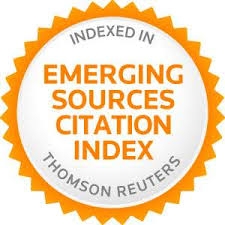Adaptación transcultural y validación del contenido del Delaware School Climate Survey-Student (DSCS-S) en Brasil
Resumen
Palabras clave
Referencias
American Psychological Association Zero Tolerance Task Force (2008). Are zero tolerance policies effective in the schools? An evidentiary review and recommendations. American Psychologist, 63, 852−862. doi: https://doi.org/10.1037/0003-066X.63.9.852
Baumrind, D. (1971). Current patterns of parental authority. Developmental Psychology Monographs, 4, 1-103. doi: https://doi.org/10.1037/h0030372
Baumrind, D. (1996). The discipline controversy revisited. Family Relations, 45, 405-414. doi: https://doi.org/10.2307/585170
Bear, G. G. (with A. Cavalier & M. Manning; 2005). Developing self-discipline and preventing and correcting misbehavior. Boston, MA: Allyn & Bacon.
Bear, G. G. (2010). School discipline and self-discipline: A practical guide to promoting prosocial student behavior. New York: Guilford Press.
Bear, G. G., Uribe-Zarain, X., Manning, M.A., & Shiomi, K. (2009). Shame, guilt, blaming, and anger: Difference between children in Japan and the U.S. Motivation and Emotion, 33, 229-238. doi: https://doi.org/10.1007/s11031-009-9130-8
Bear, G. G., Gaskins, C., Blank, J., & Chen, F. F. (2011). Delaware School Climate Survey-Student: Its factor structure, concurrent validity, and reliability. Journal of School Psychology, 49, 157-174. doi: http://dx.doi.org/10.1016/j.jsp.2011.01.001
Bear, G. G., Yang, C., Mantz, L., Pasipanodya, E., Boyer, D, & Hearn, S. (2014). Technical manual for the Delaware School Climate Surveys. Retrieved from http://wordpress.oet.udel.edu/pbs/technical-manual-for-school-climate-surveys/
Bear, G. G., Yang, C., & Pasipanodya, E. (2014). Assessing school climate: Validation of a brief measure of the perceptions of parents. Journal of Psychoeducational Assessment, 32, 1-15. Doi: http://dx.doi.org/10.1177/0734282914545748
Bear, G., Yang, C., Pell, M., & Gaskins, C. (2014). Validation of a brief measure of teachers' perceptions of school climate: relations to student achievement and suspensions. Learning Environments Research, 17(2), 339-354. doi: http://dx.doi.org/10.1007/s10984-014-9162-1
Borsa, J. C., Damásio, B. F., & Bandeira, D. R. (2012). Adaptação e validação de instrumentos psicológicos entre culturas: Algumas considerações. Paidéia, 22(53), 423-432. doi: https://doi.org/10.1590/S0103-863X2012000300014
Bradshaw, C. P., Waasdorp, T. E., Debnam, K. J., & Johnson, S. L. (2014). Measuring school climate in high schools: A focus on safety, engagement, and the environment. Journal of School Health, 84(9), 593-604. doi: https://doi.org/10.1111/josh.12186
Brand, S., Felner, R., Shim, M., Seitsinger, A., & Dumas, T. (2003). Middle school improvement and reform: Development and validation of a school-level assessment of climate, cultural pluralism, and school safety. Journal of Educational Psychology, 95, 570-588. doi: https://doi.org/10.1037/0022-0663.95.3.570
Brophy, J. E. (1996). Teaching problem students. New York: Guilford Press.
Bruns, B., Evans, D., & Luque, J. (2012). Achieving world-class education in Brazil: The next agenda. Washington DC: The World Bank.
Cassepp-Borges, V., Balbinotti, M. A. A. & Teodoro, M. L. M. (2010). Tradução e validação de conteúdo: Uma proposta para a adaptação de instrumentos. In L. Pasquali (Ed.), Instrumentação psicológica: fundamentos e práticas. (pp. 506-520). Porto Alegre: Artmed.
Cohen, J., McCabe, E. M., Michelli, N. M., & Pickeral, T. (2009). School climate: Research, policy, practice, and teacher education. Teachers College Record, 111, 180-213.
Delgado-Rico, E., Carretero-Dios, H., & Ruch, W. (2012). Content validity evidences in test development: An applied perspective. International Journal of Clinical and Health Psychology, 12(3), 449-459.
Durlak, J. A., Weissberg, R. P., Dymnicki, A. B., Taylor, R. D. & Schellinger, K. B. (2011), The impact of enhancing students’ social and emotional learning: A meta-analysis of school-based universal interventions. Child Development, 82, 405–432. doi: https://doi.org/10.1111/j.1467-8624.2010.01564.x
Fleiss, J. L. (1981). Statistical methods for rates and proportions. New York: Wiley
Fuchs, M. (2008). Impact of school context on violence at schools: A multi-level analysis. International Journal on Violence and Schools, 7(1), 20-42.
Gendron, B. P., Williams, K. R., & Guerra, N. G. (2011). An analysis of bullying among students within schools: Estimating the effects of individual normative beliefs, self-esteem, and school climate. Journal of School Violence, 10(20), 150-164. doi: https://doi.org/10.1080/15388220.2010.539166
Gjersing, L., Caplehorn, J. RM., & Clausen, T. (2010). Cross-cultural adaptation of research instruments: Language, setting, time and statistical. BMC Medical Research Methodology, 10, 13. doi: https://doi.org/10.1186/1471-2288-10-13
Gregory, A., & Cornell, D. (2009). “Tolerating” adolescent needs: Moving beyond zero tolerance policies in high school. Theory into practice, 48, 106-113. doi: https://doi.org/10.1080/00405840902776327
Haynes, N. M., Emmons, C. & Ben-Avie, M. (1997). School climate as a factor in student adjustment and achievement. Journal of Educational and Psychological Consultation, 8(3), 321-329. doi: https://doi.org/10.1207/s1532768xjepc0803_4
Hernández-Nieto, R. A. (2002). Contribuciones al análisis estadístico. Mérida, Venezuela: Universidad de Los Andes/IESINFO.
Hopson, L. M. & Lee, E. (2011). Mitigating the effect of family poverty on academic and behavioral outcomes: The role of school climate in middle and high school. Children and Youth Services Review, 33(11), 2221-2229. doi: https://doi.org/10.1016/j.childyouth.2011.07.006
IBGE – Instituto Brasileiro de Geografia e Estatística (Brazilian Institute of Geography and Statistics; 2013). Pesquisa Nacional de Saúde Escolar 2012. Rio de Janeiro: Instituto Brasileiro de Geografia e Estatística.
Jimerson, S. R., & Furlong, M. J. (2006). Handbook of school violence and school safety: From research to practice. Mahwah, New Jersey: Lawrence Erlbaum.
Klein, J., Cornell, D., & Konold, T. (2012). Relationships between bullying, school climate, and student risk behaviors. School Psychology Quarterly, 27(3), 154-169. doi: https://doi.org/10.1037/a0029350
Lisboa, C. S. M., Wendt, G. W., & Pureza, J. (2014). Mitos e fatos sobre bullying: Orientações para pais e profissionais. Novo Hamburgo: Sinopsys.
Malta, D. C., Silva, M. A. I., Mello, F. C. M., Monteiro, R. A., Sardinha, L. M. V., Crespo, C., Carvalho, M. G. O., Silva, M. M. A., & Porto, D. L. (2010). Bullying nas escolas brasileiras: Resultados da Pesquisa Nacional de Saúde do Escolar (PeNSE), 2009. Ciência & Saúde Coletiva, 15(2), 3065-3076. doi: https://doi.org/10.1590/S1413-81232010000800011
Merrell, K. W., Gueldner, B. A., Ross, S. W., & Isava, D. M. (2008). How effective are school bullying intervention programs? A meta-analysis of intervention research. School Psychology Quarterly, 23(1), 26-42. doi: https://doi.org/10.1037/1045-3830.23.1.26
Nansel, T. R., Overpeck, M., Pilla, R. S., Ruan, W. J., Simons-Morton, B., & Scheidt, P. (2001). Bullying behaviors among US youth: Prevalence and associations with psychosocial adjustment. Journal of the American Medical Association, 285, 2094-2100. doi: https://doi.org/10.1001/jama.285.16.2094
Nakano, T. C., & Siqueira, L. G. G. (2012). Validade de conteúdo da Gifted Rating Scale (versão escolar) para a população brasileira. Avaliação Psicológica, 11(1), 123-140.
Perroca, M. G., & Gaidzinski, R. R. (2003). Avaliando a confiabilidade interavaliadores de um instrumento para classificação de pacientes: Coeficiente Kappa. Revista da Escola de Enfermagem da USP, 37(1), 72-80. doi: https://doi.org/10.1590/S0080-62342003000100009
Stockard, J., & Mayberry, M. (1992). Effective educational environments. Newbury Park, CA: Corwin.
Streiner, D. L., & Norman, G. R. (2008). Health measurement scales: A practical guide to their development and use (4th Ed.). New York: Oxford University Press. doi: https://doi.org/10.1093/acprof:oso/9780199231881.001.0001
Swearer, S. M., Espelage, D. L., Vaillancourt, T., & Hymel, S. (2010). What can be done about school bullying? Linking research to educational practice. Educational Researcher, 39(1), 38-47. doi: https://doi.org/10.3102/0013189X09357622
Thapa, A., Cohen, J., Guffey, S., & Higgins-D’Alessandro, A. (2013). A Review of School Climate Research. Review of Educational Research. 83(3), 357-385. doi: https://doi.org/10.3102/0034654313483907
Wang, W., Vaillancourt, T., Brittain, H. L., McDougall, P., Krygsman, A., Smith, D., Cunningham, C. E., Haltigan, J. D., & Hymel, S. (2014). School Climate, peer victimization, and academic achievement: Results from a multi-informant study. School Psychology Quarterly, 29(3), 360-377. doi: https://doi.org/10.1037/spq0000084
Way, N., Reddy, R., & Rhodes, J. (2007). Students’ perceptions of school climate during the middle school years: Associations with trajectories of psychological and behavioral adjustment. American Journal of Community Psychology, 40, 194-213. doi: https://doi.org/10.1007/s10464-007-9143-y
Welsh, W. N. (2000). The effects of school climate on school disorder. The annals of the American Academy of Political and Social Science, 567, 88-107. doi: https://doi.org/10.1177/0002716200567001007
Yang, C., Bear, G. G., Chen, F. F., Zhang, W., Blank, J. C., & Huang, X. (2013). Students' perceptions of school climate in the U.S. and China. School Psychology Quarterly, 28(1), 7-24. doi: https://doi.org/10.1037/spq0000002
Zins, J. E., & Elias, M. J. (2006). Social and emotional learning. In G. G. Bear & K. M. Minke (Eds.), Children’s needs III: Development, prevention, and intervention (pp. 1–13). Bethesda, MD: National Association of School Psychologists.
Zullig, K., Koopman, T., Patton, J., & Ubbes, V. (2010). School climate: Historical review, instrument development, & school assessment. Journal of Psychoeducational Assessment, 28, 139-152. doi: https://doi.org/10.1177/0734282909344205
Enlaces refback
- No hay ningún enlace refback.


